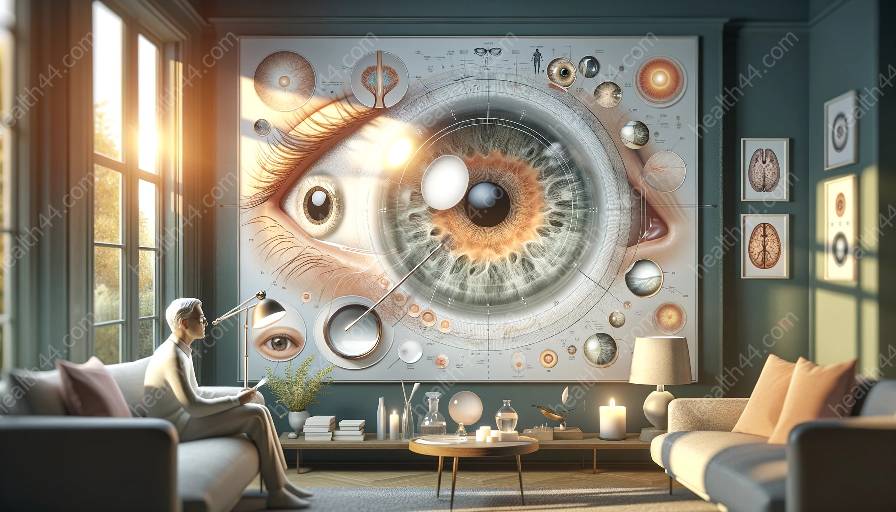The eye is a complex organ with various structures that work together to provide us with vision. One crucial component of the eye is the crystalline lens, which undergoes anatomical changes as we age, ultimately influencing our vision. Understanding these changes and how to select the right lenses for different stages of vision development is essential for optimizing visual acuity and maintaining eye health.
Anatomy of the Crystalline Lens
The crystalline lens is a transparent, biconvex structure located behind the iris, suspended by a system of zonules within the eye. Its main function is to focus light onto the retina, allowing us to see objects at varying distances. The lens consists of protein fibers and water, held together by a capsule. As we age, the composition and flexibility of the lens undergo significant changes, affecting its optical properties and overall function.
Anatomical Changes in the Crystalline Lens
Throughout life, the crystalline lens experiences a series of progressive changes that impact its structure and function. These changes include:
- Increased Lens Stiffness: With age, the proteins in the lens become more rigid, leading to a decrease in its flexibility. This stiffness can affect the eye's ability to accommodate, resulting in presbyopia, a condition characterized by difficulty focusing on close objects.
- Lens Yellowing: As we get older, the crystalline lens tends to become more yellow due to the accumulation of pigments and other substances. This process, known as lenticular sclerosis, can lead to a gradual reduction in the transmission of blue light and a decline in color perception.
- Cataract Formation: Over time, the lens may develop opacities, leading to the formation of cataracts. Cataracts interfere with light transmission, causing blurred vision and other visual disturbances.
These anatomical changes in the crystalline lens significantly impact visual function and may necessitate the use of specific lenses to address the associated visual impairments.
Selection of Lenses for Different Stages of Vision Development
Choosing the right lenses for different stages of vision development is crucial for ensuring optimal visual performance and comfort. The following considerations are essential when selecting lenses:
Infancy and Early Childhood:
During infancy and early childhood, the crystalline lens is still developing, and the visual system is undergoing rapid changes. Lenses for this stage should prioritize safety, durability, and protection against harmful UV radiation. Polycarbonate or Trivex lenses are often recommended for their impact resistance and UV-blocking properties, providing essential protection for young, active children.
Adolescence and Young Adulthood:
Throughout adolescence and young adulthood, the crystalline lens maintains its flexibility, allowing for efficient accommodation and clear vision at different distances. Lenses suitable for this stage should focus on visual clarity, comfort, and the correction of refractive errors such as myopia, hyperopia, and astigmatism. Options such as high-index lenses, photochromic lenses, and anti-reflective coatings can offer enhanced visual acuity and visual comfort for individuals in this age group.
Middle Age and Beyond:
As individuals enter middle age and beyond, the crystalline lens undergoes progressive changes that impact near vision and color perception. Lenses designed for this stage should address presbyopia and provide solutions for age-related conditions such as cataracts and lenticular sclerosis. Multifocal lenses, which offer distinct zones for near, intermediate, and distance vision, can effectively address presbyopia, while tinted lenses or coatings may help compensate for reduced color perception due to lens yellowing.
Compatibility of Lenses with Eye Anatomy
Understanding the compatibility of lenses with the anatomy of the eye is crucial for ensuring proper fit, visual acuity, and overall eye health. Lenses that are designed to complement the natural curvature and position of the crystalline lens can provide optimal visual outcomes and minimize potential discomfort. Additionally, considering factors such as lens material, thickness, and coatings in relation to the structural characteristics of the eye can help optimize the performance and comfort of the lenses.
By understanding the anatomical changes in the crystalline lens and the selection of lenses for different stages of vision development, individuals can make informed decisions about their visual correction needs, leading to improved visual experiences and overall eye health.








